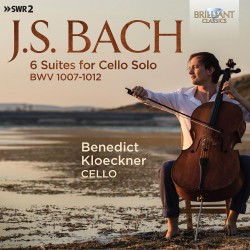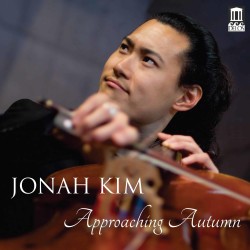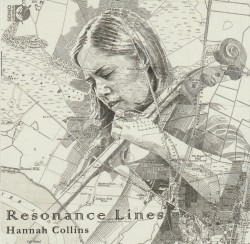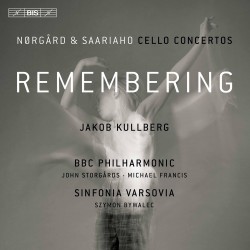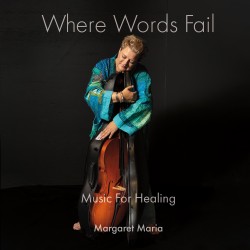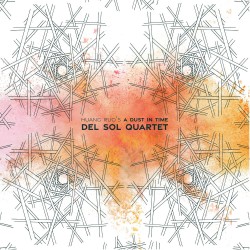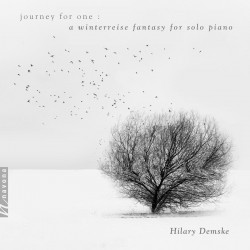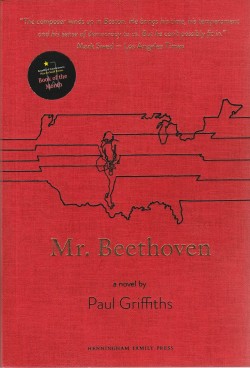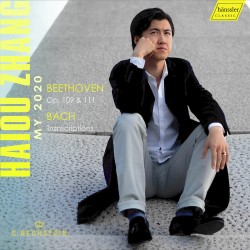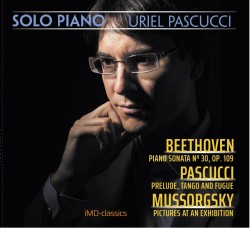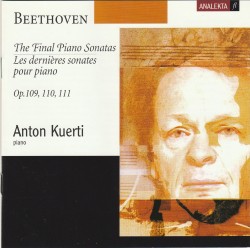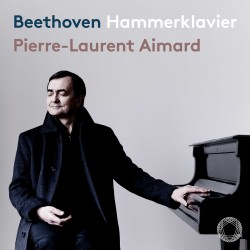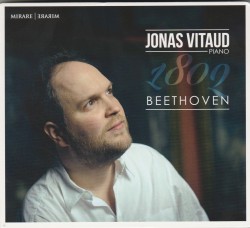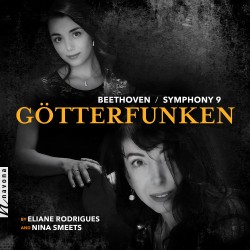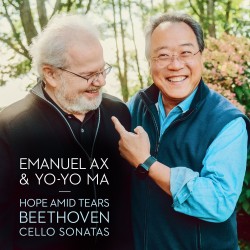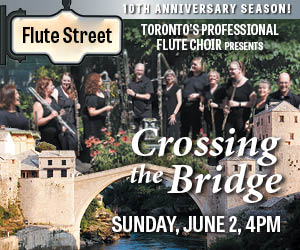Editor's Corner - February 2022
Elsewhere in these pages you will find reviews of new recordings of music by Bach: the English Suites performed by Vladimir Ashkenazy, Autour de Bach, woodwind arrangements of a number of his works as recorded by Pentaèdre, and two sets of Goldberg Variations, one with Sarah Hagen on piano and one with Cameron Carpenter in his own transcription for grand organ. The Goldbergs are arguably the most recorded, most transcribed and most adapted for other purposes of Bach’s works, and certainly the most often reviewed in The WholeNote. With the two reviews mentioned above I count 25 in as many years and here comes number 26.
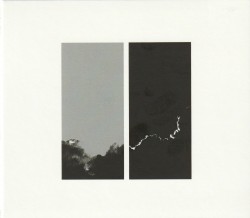 When Karlheinz Essl (b. Austria 1960) was approached by the Orpheus Trio in 2002 to arrange an existing string-trio version of the Goldberg Variations with the addition of live electronics, his initial reactions were “astonishment and bewilderment: how could that be possible with this music? Was there any artistic necessity of doing so? The idea of manipulating the sound of the live instruments electronically, of ‘spicing it up,’ seemed almost sacrilegious.” The trio was persistent however and this eventually led to the first of four (so far) realizations of Gold.Berg.Werk: for string trio; for harpsichord; for saxophone quartet; and, most recently, for piano. It is a recording of this last variety, featuring Xenia Pestova Bennett (Ergodos ER33 essl.at/records/goldbergwerk-2021.html), that arrived on my desk last month. In Gold.Berg.Werk – a pun on Goldberg Work and Gold Bergwerk (to mine, as in mining for gold) – Bach’s Goldberg Variations are “confronted with electronic sounds that are played between groups of variations, bridging the gap between the sound world of the Baroque era and the sonic reality of the third millennium.” The electronics are based on the harmonic progression of the fundamental Aria, from which the composer stripped all figurations and ornaments. Through manipulation of the overtone spectrum and the use of granular synthesis – compressing, stretching, and stopping forward motion ad libitum carried out in real time with the help of compositional algorithms – Essl has created five electronic interludes, which in live performance are spatially projected in surround sound throughout the auditorium. Even in the binaural mix for CD the sound is immersive and compelling. Pestova Bennett’s outstanding performance of the selected movements, 20 variations chosen by Essl and arranged in groups of five, bookended by the signature Aria, is beautifully integrated into the overall fabric of this “new” work. Regarding Essl’s question as to whether there was any artistic necessity to enhance such an iconic piece in the first place, I suppose we each have to decide for ourselves. For me, Gold.Berg.Werk has brought a new perspective that, after initial resistance to the idea, I have embraced and found enchanting.
When Karlheinz Essl (b. Austria 1960) was approached by the Orpheus Trio in 2002 to arrange an existing string-trio version of the Goldberg Variations with the addition of live electronics, his initial reactions were “astonishment and bewilderment: how could that be possible with this music? Was there any artistic necessity of doing so? The idea of manipulating the sound of the live instruments electronically, of ‘spicing it up,’ seemed almost sacrilegious.” The trio was persistent however and this eventually led to the first of four (so far) realizations of Gold.Berg.Werk: for string trio; for harpsichord; for saxophone quartet; and, most recently, for piano. It is a recording of this last variety, featuring Xenia Pestova Bennett (Ergodos ER33 essl.at/records/goldbergwerk-2021.html), that arrived on my desk last month. In Gold.Berg.Werk – a pun on Goldberg Work and Gold Bergwerk (to mine, as in mining for gold) – Bach’s Goldberg Variations are “confronted with electronic sounds that are played between groups of variations, bridging the gap between the sound world of the Baroque era and the sonic reality of the third millennium.” The electronics are based on the harmonic progression of the fundamental Aria, from which the composer stripped all figurations and ornaments. Through manipulation of the overtone spectrum and the use of granular synthesis – compressing, stretching, and stopping forward motion ad libitum carried out in real time with the help of compositional algorithms – Essl has created five electronic interludes, which in live performance are spatially projected in surround sound throughout the auditorium. Even in the binaural mix for CD the sound is immersive and compelling. Pestova Bennett’s outstanding performance of the selected movements, 20 variations chosen by Essl and arranged in groups of five, bookended by the signature Aria, is beautifully integrated into the overall fabric of this “new” work. Regarding Essl’s question as to whether there was any artistic necessity to enhance such an iconic piece in the first place, I suppose we each have to decide for ourselves. For me, Gold.Berg.Werk has brought a new perspective that, after initial resistance to the idea, I have embraced and found enchanting.
Listen to 'Gold.Berg.Werk' Now in the Listening Room
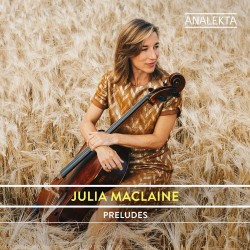 And speaking of Bach, you would be excused for thinking that after last month’s column I might have had enough cello for a while, but not so gentle reader. Julia MacLaine’s Preludes would have fit nicely in that cello-centric column but it has only now been released by Analekta (AN 2 8914 analekta.com/en). MacLaine says that she found the inspiration for this project in a Juilliard recital by Bonnie Hampton some years ago in which the Preludes from Bach’s Solo Cello Suites were interspersed with contemporary works. With funding from the Canada Council, MacLaine commissioned six Canadian composers to write works “in response” to the Bach preludes. The result is an intriguing CD with six very different responses, from Airat Ichmouratov whose quite traditional Praeludium for Cello Solo in G Major, Op.69 quotes freely from Bach before venturing onto less familiar paths, through a gamut of approaches before culminating in Post Bach by Prince Edward Island fiddler and composer Roy Johnstone. This last work features rollicking dance sections juxtaposed with what MacLaine describes as a “grumbly […] glimpse of the underworld, the murky place that gave rise to the motives that permeate Bach – and Johnstone.” Along the way we are treated to Gabriel Dharmoo’s sarasaraahat, a piece inspired by the Prelude from the Suite in D Minor that uses the Indian Carnatic music of the composer’s cultural heritage to put the sound produced by the cello under a microscope, exploring the “very limit between pitch and white noise.” Carmen Braden’s Play Time asks the cellist to “play the score as if you just heard the Bach Cello Suite No.3 for the first time and now sit down and improvise, playful as a child.” In her signature way, Nicole Lizée employs technology to expand the palette of the cello, in the words of MacLaine “a marvellous, fantastical electronic world [with the cello] singing expressively above it, weaving in and out of it, and chasing after it.” Cris Derksen states “LAND BACH is my response to Bach’s fifth prelude as an Indigenous composer and cellist.” Her treatment includes a section of “looped rolled chords” which MacLaine says is characteristic of Derksen’s music.
And speaking of Bach, you would be excused for thinking that after last month’s column I might have had enough cello for a while, but not so gentle reader. Julia MacLaine’s Preludes would have fit nicely in that cello-centric column but it has only now been released by Analekta (AN 2 8914 analekta.com/en). MacLaine says that she found the inspiration for this project in a Juilliard recital by Bonnie Hampton some years ago in which the Preludes from Bach’s Solo Cello Suites were interspersed with contemporary works. With funding from the Canada Council, MacLaine commissioned six Canadian composers to write works “in response” to the Bach preludes. The result is an intriguing CD with six very different responses, from Airat Ichmouratov whose quite traditional Praeludium for Cello Solo in G Major, Op.69 quotes freely from Bach before venturing onto less familiar paths, through a gamut of approaches before culminating in Post Bach by Prince Edward Island fiddler and composer Roy Johnstone. This last work features rollicking dance sections juxtaposed with what MacLaine describes as a “grumbly […] glimpse of the underworld, the murky place that gave rise to the motives that permeate Bach – and Johnstone.” Along the way we are treated to Gabriel Dharmoo’s sarasaraahat, a piece inspired by the Prelude from the Suite in D Minor that uses the Indian Carnatic music of the composer’s cultural heritage to put the sound produced by the cello under a microscope, exploring the “very limit between pitch and white noise.” Carmen Braden’s Play Time asks the cellist to “play the score as if you just heard the Bach Cello Suite No.3 for the first time and now sit down and improvise, playful as a child.” In her signature way, Nicole Lizée employs technology to expand the palette of the cello, in the words of MacLaine “a marvellous, fantastical electronic world [with the cello] singing expressively above it, weaving in and out of it, and chasing after it.” Cris Derksen states “LAND BACH is my response to Bach’s fifth prelude as an Indigenous composer and cellist.” Her treatment includes a section of “looped rolled chords” which MacLaine says is characteristic of Derksen’s music.
As I have said before, it must be extremely hard for a performer these days to find a way to present Bach’s iconic works – that have been recorded countless times – in a new light. I find MacLaine’s performances of both the Bach originals and the new companions insightful and convincing. While I have mixed feelings about “cherry picking” just the preludes from the Bach Suites, in this context where the composers are specifically reacting to the movements in question I find the project as a whole very well-considered and satisfying. I’ll give MacLaine the last words: “My hope is […] that you will hear Bach differently, as though past and present composers were having a conversation across the years, across the ocean.”
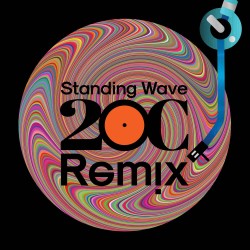 Nicole Lizée is also among the seven composers commissioned by Vancouver’s venerable Standing Wave ensemble for its project 20C Remix (Redshift Records standingwave.ca) in which a number of iconic 20th century works are reimagined for the new millennium. With three decades under its belt, Standing Wave is touted as Western Canada’s foremost contemporary chamber ensemble. 20C Remix – a digital release with a limited edition vinyl run – opens with Stone’s Throw, Jocelyn Morlock’s ebullient take on Ann Southam’s Glass Houses No.9, adapted for full ensemble: flute, clarinet, violin, cello, piano and percussion. It’s a roller coaster ride for all concerned and I particularly enjoyed finding hints of Stravinsky in the mix. Jennifer Butler enhances Messiaen’s Le merle noir for piano and flute with the other members of the ensemble in a fairly straightforward and effective homage to the French master. Walking in Claude’s Footsteps is Jordan Nobles’ gentle take on Debussy’s Des pas sur la neige and Jared Miller finds Guilty Pleasures in his interpretation of John Adams’ China Gates. Unlike most of the works here which enlarge the original forces, Chris Mayo and Bekah Simms take orchestral textures and adapt them for the sextet. Mayo’s Oh Come Now! There is a Beautiful Place! is an arrangement “on a relatively miniature scale” of Reinhold Glière’s mammoth Symphony No.3. Although the liner notes tell us that the title is taken from a poem by Kenneth Patchen, there is no explanation of how this relates to the symphony and I’m left scratching my head. Simms’ Tenebrose explores the “night music” from the third movement of Bartók’s Music for Strings, Percussion and Celesta with “approaches that I feel the composer would have been likely drawn to had he lived into the 21st century,” including microtonal glissandi and the use of non-tempered pitches while incorporating familiar motifs from the original. Lizée is represented with two tracks, her own inimitable treatments of songs by pop icons Dead or Alive (You Spin Me Round) and Justin Timberlake (Cry Me a River). While certainly a different sensibility from the other offerings here, they somehow manage to fit in seamlessly. I particularly enjoyed the bass clarinet and vibraphone lines in Epiphora, her take on Timberlake’s classic, which bring this very satisfying disc to a close.
Nicole Lizée is also among the seven composers commissioned by Vancouver’s venerable Standing Wave ensemble for its project 20C Remix (Redshift Records standingwave.ca) in which a number of iconic 20th century works are reimagined for the new millennium. With three decades under its belt, Standing Wave is touted as Western Canada’s foremost contemporary chamber ensemble. 20C Remix – a digital release with a limited edition vinyl run – opens with Stone’s Throw, Jocelyn Morlock’s ebullient take on Ann Southam’s Glass Houses No.9, adapted for full ensemble: flute, clarinet, violin, cello, piano and percussion. It’s a roller coaster ride for all concerned and I particularly enjoyed finding hints of Stravinsky in the mix. Jennifer Butler enhances Messiaen’s Le merle noir for piano and flute with the other members of the ensemble in a fairly straightforward and effective homage to the French master. Walking in Claude’s Footsteps is Jordan Nobles’ gentle take on Debussy’s Des pas sur la neige and Jared Miller finds Guilty Pleasures in his interpretation of John Adams’ China Gates. Unlike most of the works here which enlarge the original forces, Chris Mayo and Bekah Simms take orchestral textures and adapt them for the sextet. Mayo’s Oh Come Now! There is a Beautiful Place! is an arrangement “on a relatively miniature scale” of Reinhold Glière’s mammoth Symphony No.3. Although the liner notes tell us that the title is taken from a poem by Kenneth Patchen, there is no explanation of how this relates to the symphony and I’m left scratching my head. Simms’ Tenebrose explores the “night music” from the third movement of Bartók’s Music for Strings, Percussion and Celesta with “approaches that I feel the composer would have been likely drawn to had he lived into the 21st century,” including microtonal glissandi and the use of non-tempered pitches while incorporating familiar motifs from the original. Lizée is represented with two tracks, her own inimitable treatments of songs by pop icons Dead or Alive (You Spin Me Round) and Justin Timberlake (Cry Me a River). While certainly a different sensibility from the other offerings here, they somehow manage to fit in seamlessly. I particularly enjoyed the bass clarinet and vibraphone lines in Epiphora, her take on Timberlake’s classic, which bring this very satisfying disc to a close.
Listen to '20C Remix' Now in the Listening Room
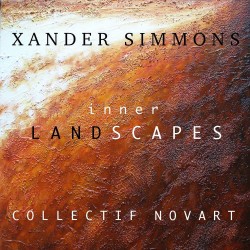 The next release features two relative newcomers on the contemporary music scene, composer Xander Simmons and Montreal’s Collectif Novart. Simmons’ second release Inner Landscapes (xandersimmons.com) features five works for varying ensembles, opening with the contemplative Three Points for piano trio which gradually builds to a dramatic peak before receding. Pink Mountain is a four-movement work – Dawn, Daylight, Drift and Dusk – which is one of two works here that take direct inspiration from the painted landscapes of Peter Doig, the other being Grande Riviere, a work that adds ambient electronic textures to acoustic instrumentation. Solstice is in two parts, and utilizes the largest ensemble here, a nonet. Winter opens with a dark duet between contrabass and bassoon, slowly brightening as if the pale sun were shining through. Summer opens with busy flute over a bassoon ostinato and continues in a minimalist melisma of insect sounds with birds soaring above in the cloudless sky (my imagery). The composer describes the closing Vortices as a “collage of string performances mixed with synthesizers and field recordings.” As with the other pieces here, the language is consonant and tonal, but here the extra-musical materials add an edge to the layers of sound. Overall this is a strong release from a young composer, showing a breadth of interest and understanding that bodes well for future endeavours. The collectif is in fine form, with convincing performances and solid ensemble work.
The next release features two relative newcomers on the contemporary music scene, composer Xander Simmons and Montreal’s Collectif Novart. Simmons’ second release Inner Landscapes (xandersimmons.com) features five works for varying ensembles, opening with the contemplative Three Points for piano trio which gradually builds to a dramatic peak before receding. Pink Mountain is a four-movement work – Dawn, Daylight, Drift and Dusk – which is one of two works here that take direct inspiration from the painted landscapes of Peter Doig, the other being Grande Riviere, a work that adds ambient electronic textures to acoustic instrumentation. Solstice is in two parts, and utilizes the largest ensemble here, a nonet. Winter opens with a dark duet between contrabass and bassoon, slowly brightening as if the pale sun were shining through. Summer opens with busy flute over a bassoon ostinato and continues in a minimalist melisma of insect sounds with birds soaring above in the cloudless sky (my imagery). The composer describes the closing Vortices as a “collage of string performances mixed with synthesizers and field recordings.” As with the other pieces here, the language is consonant and tonal, but here the extra-musical materials add an edge to the layers of sound. Overall this is a strong release from a young composer, showing a breadth of interest and understanding that bodes well for future endeavours. The collectif is in fine form, with convincing performances and solid ensemble work.
Listen to 'Inner Landscapes' Now in the Listening Room
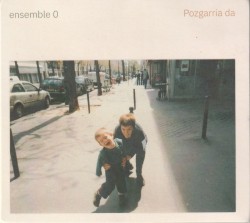 I first heard the music of Petar Klanac (then known as Pierre-Kresimir Klanac) at Glenn Gould Studio back in November 1997 as part of New Music Concerts’ contribution to the Made In Canada Festival, and then in 2000 on the Ensemble contemporain de Montréal CD Nouvelles Territoires 1. In the intervening years he had fallen off my radar until a few weeks ago when he reached out to me about his new CD.
I first heard the music of Petar Klanac (then known as Pierre-Kresimir Klanac) at Glenn Gould Studio back in November 1997 as part of New Music Concerts’ contribution to the Made In Canada Festival, and then in 2000 on the Ensemble contemporain de Montréal CD Nouvelles Territoires 1. In the intervening years he had fallen off my radar until a few weeks ago when he reached out to me about his new CD.
Klanac has a surprisingly small presence on the Internet. The little biographical information I’ve been able to glean tells me that his principal instruments are violin and electric guitar and that he studied composition with Gilles Tremblay at the Montreal Conservatoire from 1992 to 1995 and later with Gérard Grisey and Marco Stroppa at the Paris Conservatoire and Denys Bouliane at the Rencontres de musique nouvelle du Domaine Forget in Charlevoix (Québec). He was a child chorister in the Maîtrise des Petits Chanteurs du Mont-Royal (Saint-Joseph’s Oratory, Montreal) for nine years and this seems to have strongly informed his compositional aesthetic. That first piece I heard was titled Le ressuscité de Béthanie (on the subject of the resurrection of Lazarus), a theme to which he returned two decades later in a work for Ensemble Nahandove. Many of the works in his oeuvre focus on religious themes, such as Agnus Dei for men’s choir, Pater Noster for tenor and string quartet and Sancta Parens for two saxophones and cello. When commissioned by the Société de musique contemporain du Québec to compose a new work for its 55th anniversary concert last December he presented the 18-minute chamber ensemble work Yerushalayim.
Klanac has made his home in France for some time and his latest project, Pozgarria da (petarklanac.bandcamp.com), was commissioned by Ensemble 0, a group whose members are based in different cities in France, Catalonia and Belgium, as part of 30th anniversary celebrations for the Institut Culturel Basque. Pozgarria da (How wonderful it is) is a setting of four poems by the Basque Franciscan Father Bitoriano Gandiaga for voice (Fanny Chatelain singing in the original language) and an unusual ensemble consisting of flutes, rebec and nyckelharpa, four organs, gamelan selunding and percussion. There is a sparse instrumental prelude and two interludes, all titled Maite dut bizitza (I love life), separating the first three poems, whose sparse and subdued settings are vaguely reminiscent of medieval music. The final movement, also Maite dut bizitza, is the most expansive by far at almost 17 minutes, and is also the most exuberant; a flamboyant minimalist – think cinematic Philip Glass – paean to “The joy of life / To my surroundings / that are alive. / I wish the joy of being alive / To everyone who lives / the grace of life.” Amen! A very welcome anthem and reminder in these unjoyful times.
Listen to 'Pozgarria da' Now in the Listening Room
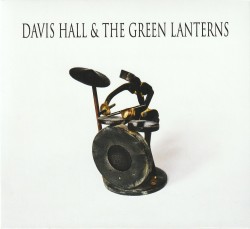 And now for something completely different, although I find joy here too. “What if Dark Orchard (Jim Casson’s experimental music project) and ‘The Blues’ got together in New Orleans and watched Twin Peaks with Daniel Lanois?” That’s the premise behind Davis Hall & The Green Lanterns (greenlanterns.ca). Originally conceived in the early days of COVID-19 as a remote collaboration with bass player Russ Boswell, Casson laid down drum tracks in his home studio that he shared with Boswell who added funky bass licks and a song outline. They invited Bernie LaBarge to add some guitar lines and Brent Barkman on organ; and Marshville Station, the second track on the current album, was born. Although the project was shelved for a while, the ongoing pandemic has provided the perfect opportunity to revisit the idea.
And now for something completely different, although I find joy here too. “What if Dark Orchard (Jim Casson’s experimental music project) and ‘The Blues’ got together in New Orleans and watched Twin Peaks with Daniel Lanois?” That’s the premise behind Davis Hall & The Green Lanterns (greenlanterns.ca). Originally conceived in the early days of COVID-19 as a remote collaboration with bass player Russ Boswell, Casson laid down drum tracks in his home studio that he shared with Boswell who added funky bass licks and a song outline. They invited Bernie LaBarge to add some guitar lines and Brent Barkman on organ; and Marshville Station, the second track on the current album, was born. Although the project was shelved for a while, the ongoing pandemic has provided the perfect opportunity to revisit the idea.
I’ve been a sucker for blues tuba since I saw Taj Mahal at the Mariposa Festival 40-some years ago backed by a quartet of tubas headed by the late, great Howard Johnson (1941-2021). Well, that’s how this adventure begins, with the funky, N’awlins-flavoured Temperanceville co-written by Casson, tuba player N. Jay Burr and guitarist Wayne DeAdder, with Mike Branton sitting in on slide guitar. The personnel of the Green Lanterns changes from track to track, with Casson on drums, keyboards, autoharp and even theremin the only constant, but the result is always bluesy and frequently scorching. Burr, DeAdder, Boswell and Brandon make numerous contributions and guests include Steve Marriner and Al Lerman on harmonica, Stephen Miller on dobro, and an archival appearance by 60s DJ Bob Bowland from CHOW radio in Welland, Ontario. Casson explains the name of the group, and of the songs, as a tribute to the Niagara Peninsula, the stomping grounds of his formative years. “Davis Hall” was the name of the community centre in his hometown where he attended nursery school, “The Green Lantern” was the soda shop in town when he was a kid and the names of all the songs correspond to place names on the peninsula. Who knew that the fruit belt could be so darn funky? This one is guaranteed to lift your spirits (and your heels)!
We invite submissions. CDs, DVDs and comments should be sent to: DISCoveries, WholeNote Media Inc., The Centre for Social Innovation, 503 – 720 Bathurst St. Toronto ON M5S 2R4.
David Olds, DISCoveries Editor
discoveries@thewholenote.com


